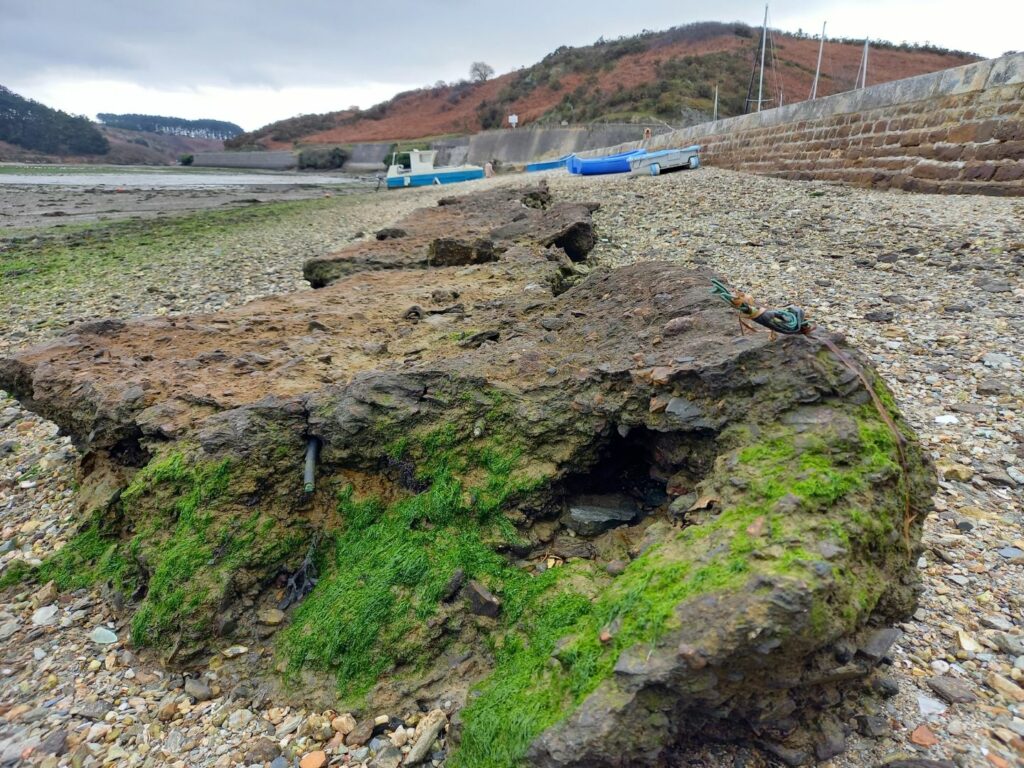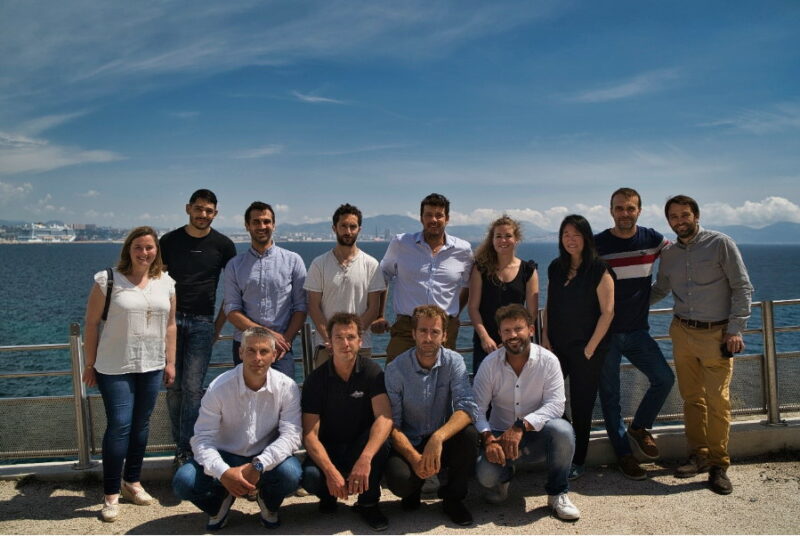Who are we ?
Seacure, by its former name Geocorail, was created in 2012 but its history goes back long before that.

1st experiment Geocorail Belle-Île-en-Mer (56)
Origin
The process developed by the company is based on a discovery made by the company’s founders, experts in active cathodic protection in the 1980s. Following an error in positioning the anode of a cathodic protection device at the landing of the electric cable supplying Belle-Île-en-Mer, they discovered that current cycling could lead to the formation of a rocky aggregate at the cathode.
After conducting a few experiments on the side of their professional occupations, the founders were able to devote more time to studying the phenomenon once they retired. They thus created a dedicated association in the early 2000s, and were able to show promising results to investors. GEOCORAIL is the result of this encounter.
Research and process development
The construction of a laboratory / test bench based near Marseilles, with the support of the site operator, FLUXEL has enabled us to have around fifty experimental electrolytic tanks supplied with seawater, as well as an open-water test area.
The first tests carried out in this laboratory confirmed the sensitivity of the process to certain fundamental parameters. Assisted by an expert, we were able to carry out a large number of experiments. These were launched in mid-2017, and produced results at 6, 9 and 12 months. Several articles have been published about this research. The company kept control of the process and the results and we have been able to remove the uncertainty concerning the robustness of the process.
All developments are protected by the extension of existing international patents and the regular filing of new patents ensures that our customers and partners benefits from our technological lead.
In parallel with our fundamental research, we have been working on applications of the process to tangible problems in an open environment. Several experimental projects have been carried out:
2016-2018
Châtelaillon-Plage (17), various experiments on the resistance of cathodic supports to mechanical swell agitation
2016
Guéthary (64), reinforcement of a submersible low wall
2017-2019
Yves (17), 150m2 of riprap support under a groin in the area affected by storm Xynthia
2017
Le Pradet (83), 70m2 of anti-scour at the bottom of the dock
2017
Ajaccio (20), construction of an artificial reef in response to an invitation to tender from the Corsican Environmental Office
2017-2018
La Rochelle (17) and Fos-sur-Mer (13): Geocaport project on the sequestration of polluted sediments
These first projects have enabled us to confirm the results obtained in the laboratory, to decide which applications to develop first and to industrialize the power generators essential to the Geocorail process.
Product development is carried out in conjunction with world-renowned suppliers of geotubes and marine geotextiles, and with the world’s leading gabion manufacturers. Our technology GEOCORAIL allowing us to overcome the main defect of these low-cost solutions : the fragility of textile fibers to mechanical aggression.
Our team
-
Research & Development
-
Fondamental research :
-
Laboratory in Marseille's port,
-
Scientific partnership with the University of La Rochelle – LaSIE laboratory.
-
Past and current theses
-
Innovation partnership with CEREMA
-
-
Development of new solutions
-
Industrial and scientific partnerships with major players in their fields (textiles, gabions, etc.)
-
Call for Projects
GEOCAPORT: capture of polluted sediments
BLIREM: polarizable geotextile for reinforced breakwaters
FIRCAP: Prefabrication of technical solutions such as gabions or artificial reefs using shellfish waste
La Rochelle Territory Zero Carbon: construction of a gabion embankment containing 60kg stones to replace 1T to 3T blocks - Design and scientific supervision by Cerema & the University of La Rochelle - LaSIE laboratory
-
-
-
Pilot's conception
-
Designing innovative solutions to replace traditional structures
-
R&D, technical and sales departments work together to find the best solutions to customer problems
-
-
Designing
-
Our in-house design office takes charge of the electro-chemical design of our solutions, to ensure that they operate smoothly and under optimum conditions.
-
In association with partner design offices, we offer efficient solutions at least equal in performance if not superior to traditional methods
-
-
Production
-
The integration of a submarine work company in 2019 will enable us to carry out our projects around our branches.
-
For projects further away, we provide on-site supervision by one or more of our engineers.
-
Our aim is to get local players to collaborate as much as possible in order to raise their awareness of our approach.
-
-
Supervision / Maintenance
-
All our installations are monitored and controlled remotely
-
All equipment is connected and communicates in real time
-
We are fully able to know the status of every project, to take control remotely in order to change the settings or schedule an intervention if necessary
-
Depending on the specific needs of certain projects, inspection or maintenance operations can be planned and carried out in-house by our professional divers
-


